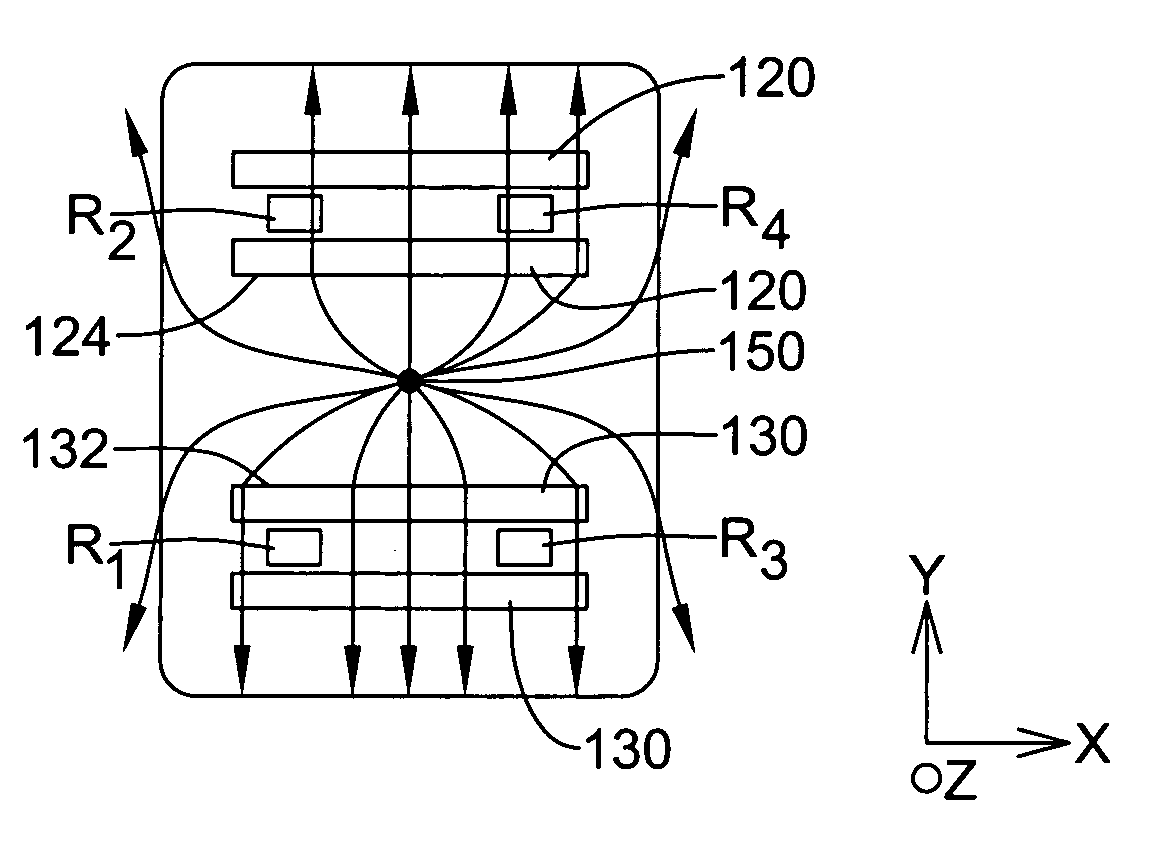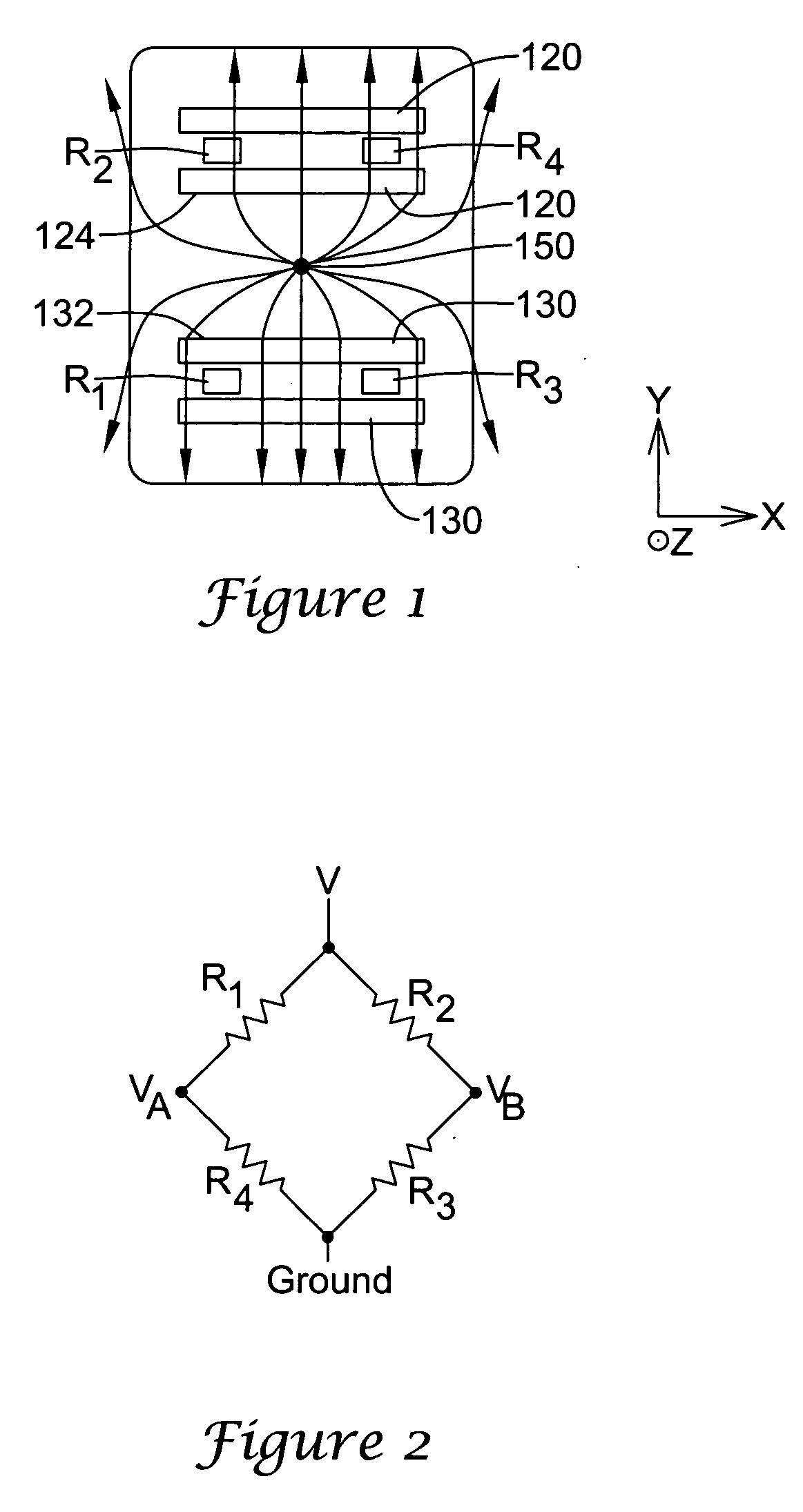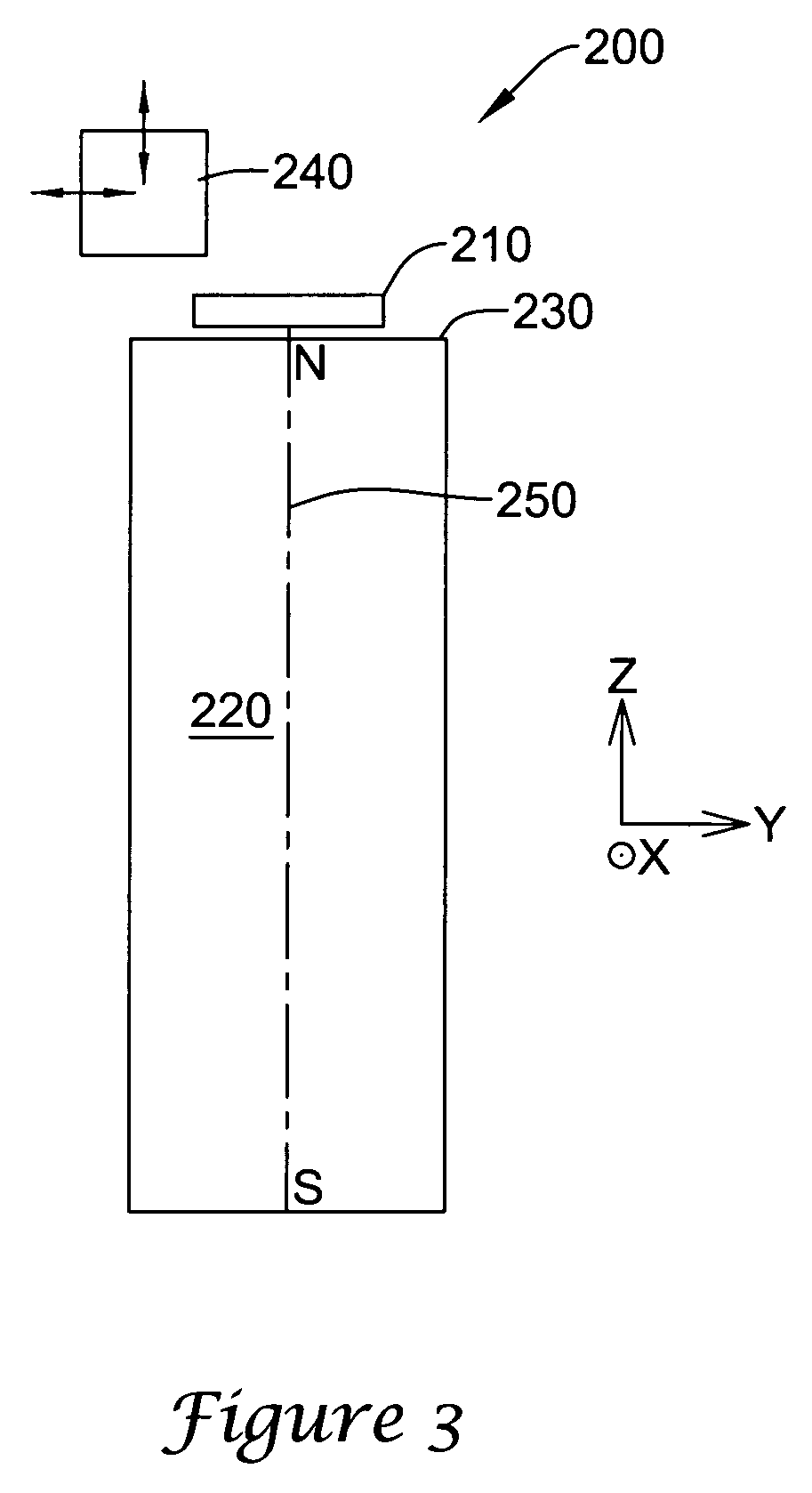GMR sensor with flux concentrators
a flux concentrator and gmr sensor technology, applied in the direction of electrical/magnetically converting sensor output, galvano-magnetic devices, instruments, etc., can solve the problems of difficult detection above ambient noise, small output signal, and poor signal-to-noise ratio, so as to increase the dynamic range of proximity sensors and minimize the effect of any misalignmen
- Summary
- Abstract
- Description
- Claims
- Application Information
AI Technical Summary
Benefits of technology
Problems solved by technology
Method used
Image
Examples
Embodiment Construction
[0015] The following description should be read with reference to the drawings, in which like elements in different drawings are numbered in like fashion. The drawings, which are not necessarily to scale, depict selected embodiments and are not intended to limit the scope of the invention. Although examples of construction, dimensions, and materials may be illustrated for the various elements, those skilled in the art will recognize that many of the examples provided have suitable alternatives that may be utilized.
[0016] The present invention provides a proximity sensor. In some embodiments, the invention uses magnetoresistive resistor made from a Giant Magneto-Resistive (GMR) material that are configured in a sensing bridge. In some cases, the GMR sensing bridge may be configured to minimize sensitivity in a standard axis. In other cases, the GMR sensing bridge may be configured to minimize sensitivity in a cross-axis axis. While the present invention is not so limited, an appreci...
PUM
 Login to View More
Login to View More Abstract
Description
Claims
Application Information
 Login to View More
Login to View More - R&D
- Intellectual Property
- Life Sciences
- Materials
- Tech Scout
- Unparalleled Data Quality
- Higher Quality Content
- 60% Fewer Hallucinations
Browse by: Latest US Patents, China's latest patents, Technical Efficacy Thesaurus, Application Domain, Technology Topic, Popular Technical Reports.
© 2025 PatSnap. All rights reserved.Legal|Privacy policy|Modern Slavery Act Transparency Statement|Sitemap|About US| Contact US: help@patsnap.com



